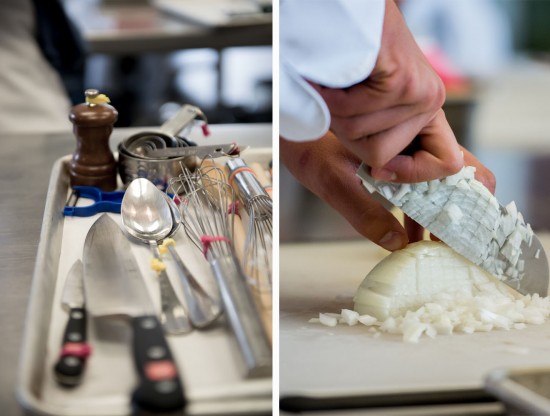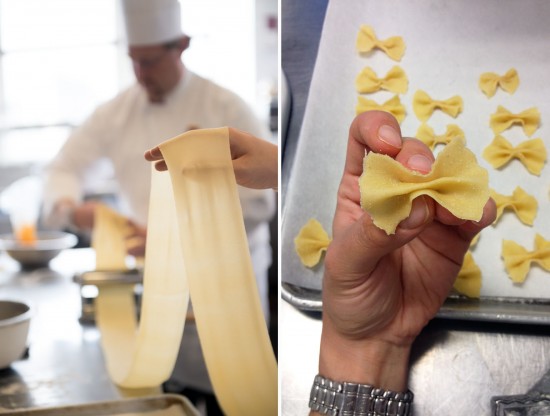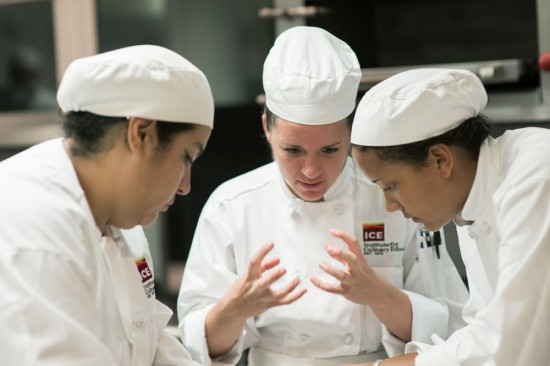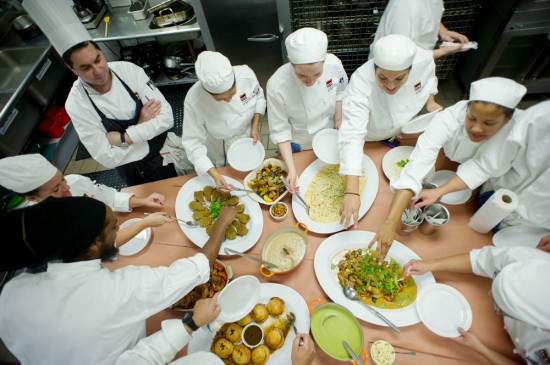When first starting out in culinary school, my classmates and I were all performing the same task. Each station set with a cutting board, chef’s knife, paring knife, boning knife and vegetable peeler. Each student holding an onion to dice, a rack of lamb to French or a pile of potatoes to tourné.

Eventually, as we moved on to different cooking methods—learning to sauté, braise, grill, roast and fry—we worked in teams of three or four. The real test here was learning to communicate within a group, delegating who would break down which vegetables and proteins; measure out spices, wine or oil; and most importantly, who would make sure nothing overcooked or burned.
Yet now that we’ve moved beyond basic techniques to the regional cuisines of France and Italy, the whole class is working together as one collaborative group. Manning one of three stations—garde manger, entremets or main dishes—my peers and I are no longer responsible for the creation of a single recipe from start to finish.

If stationed at garde manger, we’re responsible for breaking down vegetables, crafting handmade pasta and other various cold or preliminary preparations. The entremets team is responsible for hot sides or the supporting elements of main dishes, from sautéing mushrooms or braising artichokes to brewing soups and crafting sauces. The cooks responsible for main dishes are the kingpins of proteins: breaking down flounder, de-veining shrimp and grinding meatballs, then sautéing, frying or roasting as needed.
In the beginning, there was concern among the ranks that we would learn less by only preparing one or two components of each dish. Yet, to our surprise, this style of working has far surpassed all our expectations. We’re not just learning to chop, whip, butcher, sauté or bake—we’re learning how to trust (and how much to trust) the members of our kitchen team.
In short, we’re learning the skills it takes to survive and thrive in a restaurant—from how to communicate when we need help and when to lend a hand, to timing our tasks so that we can keep the whole kitchen on schedule. And, in the process, we’re realizing that our technical skills are only 50% of what it takes to be a great cook—and maybe 10% of what it takes to be an extraordinary chef.

Not to mention, we’re mentally training for the repetition of professional kitchen work. No longer chopping a single onion or frying just three portions of fish, we now cook in bulk. I’ve personally cleaned and cooked enough artichokes, calamari, pasta or soup for a party of thirty. It’s amazing how long it takes to roll and shape farfalle when your end goal is serving a small army!
Beyond scaling up our efficiency, streamlining our communication and refining our technical skills, we’re gaining an appreciation for the battles fought and won each night at a successful restaurant. You start with a motely crew of strangers with different strengths and expectations and train them to work like a seamless team—executing at the highest level, over and over again. The fact that so many excellent restaurants and food businesses exist is a sheer miracle—a miracle that, one day, my classmates and I hope to help create.

Click here to read more about life as an ICE culinary student.




